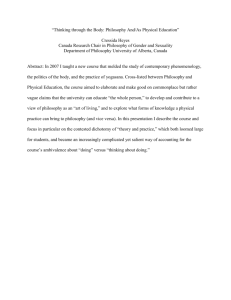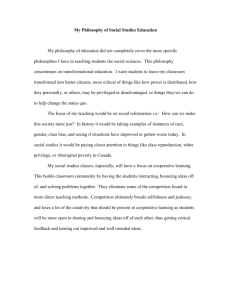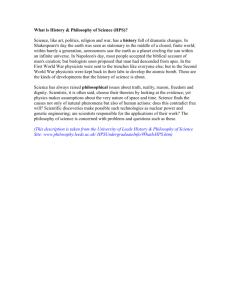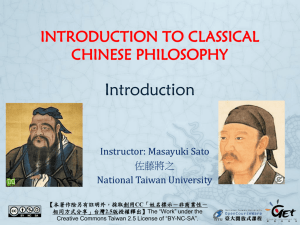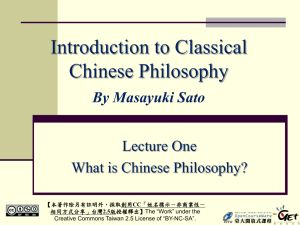PL18, WORLD PHILOSOPHY, Exam II, F=03, Emmachild
advertisement
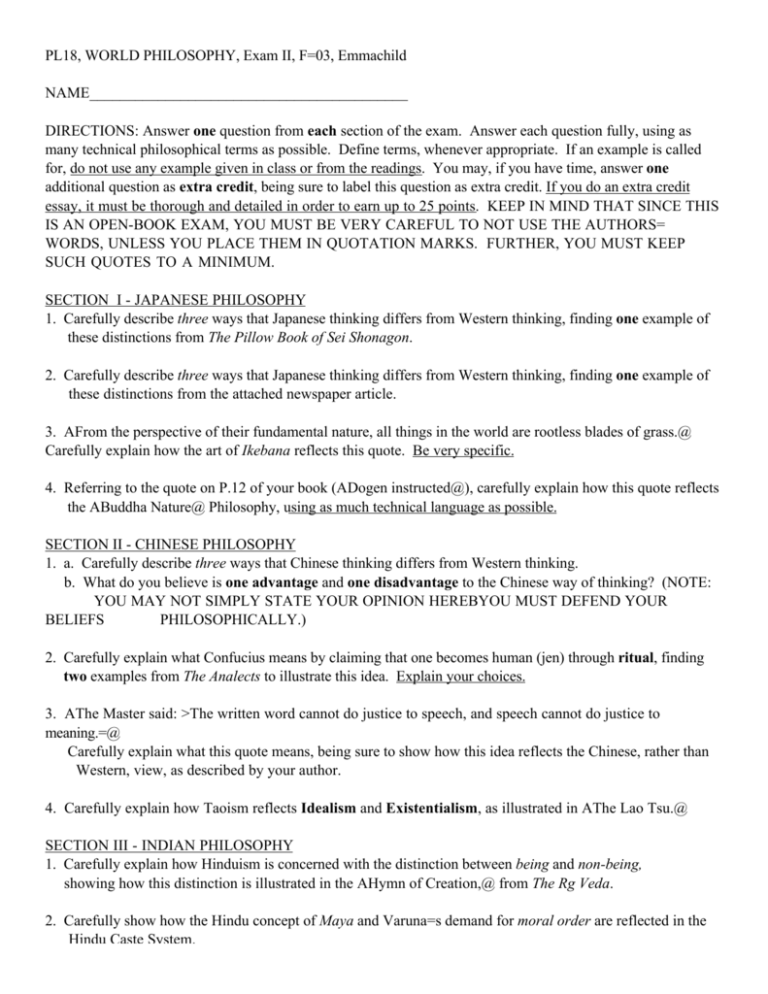
PL18, WORLD PHILOSOPHY, Exam II, F=03, Emmachild NAME__________________________________________ DIRECTIONS: Answer one question from each section of the exam. Answer each question fully, using as many technical philosophical terms as possible. Define terms, whenever appropriate. If an example is called for, do not use any example given in class or from the readings. You may, if you have time, answer one additional question as extra credit, being sure to label this question as extra credit. If you do an extra credit essay, it must be thorough and detailed in order to earn up to 25 points. KEEP IN MIND THAT SINCE THIS IS AN OPEN-BOOK EXAM, YOU MUST BE VERY CAREFUL TO NOT USE THE AUTHORS= WORDS, UNLESS YOU PLACE THEM IN QUOTATION MARKS. FURTHER, YOU MUST KEEP SUCH QUOTES TO A MINIMUM. SECTION I - JAPANESE PHILOSOPHY 1. Carefully describe three ways that Japanese thinking differs from Western thinking, finding one example of these distinctions from The Pillow Book of Sei Shonagon. 2. Carefully describe three ways that Japanese thinking differs from Western thinking, finding one example of these distinctions from the attached newspaper article. 3. AFrom the perspective of their fundamental nature, all things in the world are rootless blades of grass.@ Carefully explain how the art of Ikebana reflects this quote. Be very specific. 4. Referring to the quote on P.12 of your book (ADogen instructed@), carefully explain how this quote reflects the ABuddha Nature@ Philosophy, using as much technical language as possible. SECTION II - CHINESE PHILOSOPHY 1. a. Carefully describe three ways that Chinese thinking differs from Western thinking. b. What do you believe is one advantage and one disadvantage to the Chinese way of thinking? (NOTE: YOU MAY NOT SIMPLY STATE YOUR OPINION HEREBYOU MUST DEFEND YOUR BELIEFS PHILOSOPHICALLY.) 2. Carefully explain what Confucius means by claiming that one becomes human (jen) through ritual, finding two examples from The Analects to illustrate this idea. Explain your choices. 3. AThe Master said: >The written word cannot do justice to speech, and speech cannot do justice to meaning.=@ Carefully explain what this quote means, being sure to show how this idea reflects the Chinese, rather than Western, view, as described by your author. 4. Carefully explain how Taoism reflects Idealism and Existentialism, as illustrated in AThe Lao Tsu.@ SECTION III - INDIAN PHILOSOPHY 1. Carefully explain how Hinduism is concerned with the distinction between being and non-being, showing how this distinction is illustrated in the AHymn of Creation,@ from The Rg Veda. 2. Carefully show how the Hindu concept of Maya and Varuna=s demand for moral order are reflected in the Hindu Caste System. 3. Carefully explain how Krishna convinces Arjuna to Afollow his dharma,@ referring specifically to quotes= from The Bhagavad Gita. Be very specific in your explanations.




